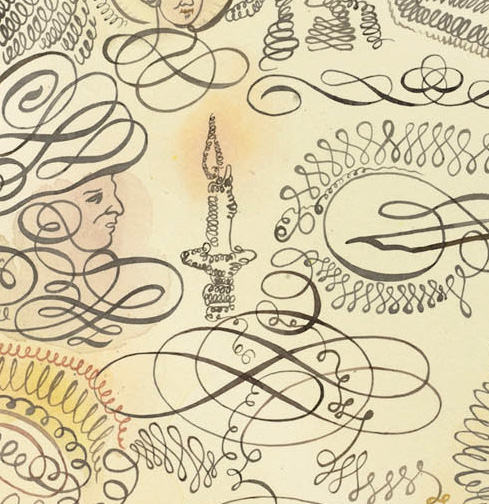|
Fay çe que vouldras. However, we know that in our desire and others' expectations after some time will be a general reformation of both divine and human things. For, before sunrise, the sky illuminated by the dawn light. Fama Fraternitatis, 1614 Above all, one must soberly accept Fredrik Söderberg's new paintings as the sacred atlas of his spiritual search for an answer to life's fundamental question: "What happens after death?" In Judaism, Christianity and Islam the divine resurrection of human beings by means of a spiritual awakening and transformation into a life after death, is a central doctrine. And while Söderberg shares this spiritual optimism with conventional religions, he finds his comfort within the realm of the esoteric and occult, especially from the teachings and prophecies of the Hermetic Order of the Golden Dawn, a complex fusion of teaching and ritual magickal practice that brought together Kabalistic cosmology, the Rosicrucian initiation system, ritual magick, Egyptology, astrology, tarot, and various other occult lineages. To stare into his paintings therefore, is to see the hand of a seeker, a spiritual artist at work, as much as it is to gaze into Luca Signorelli's Resurrection of the Flesh, 1499-1502. In Symbols and Tools, 2009 we see a complex array of iconography including the Rose Cross Lamen, but far from an inert visual inventory, the iconography has the spiritual power to sink Söderberg into his occult trance life as he paints them. In this painting, as well as others like Meditation 7, 2009, the symbols of the Golden Dawn literally instrumentalize his spiritual search. Of course the Golden Dawn has its own history around personalities like Aleister Crowley, the infamous occultist, drug addict, social provocateur, and sexual libertine who the British press demonized as "the wickedest man in the world," but this doesn't rub off on Söderberg. He makes solemn claims for his art spawning alternative experiences, especially where the mysteries of life are concerned. In this sense Söderberg's art discovers new spiritual vistas, while being earnest, proactive, pre-scientific, and post-critical. His art is allergic to irony. Seeing beyond his untethered life, the heart of Crowley's writing tells us True Will is our essential spiritual core as we move from a relatively unenlightened state to a state of pure selfhood. "Do what thou wilt" was Crowley's moral and spiritual compass, yet he never meant it to refer to the outer emotional self, but rather to the sacred core of personal divinity. His conception of God was as a force within oneself. Söderberg has found faith in these basic tenets, and his art thus becomes the face to his search for spiritually. Why not? Do you have a better alternative? Ronald Jones, Stockholm 2010 |
 |